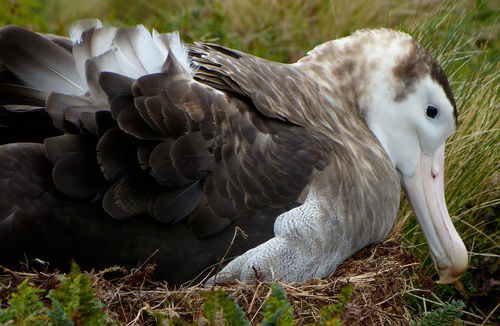The Mysterious Plight of the Antipodean Albatross
New Zealand’s endemic Antipodean wandering albatross population is significantly declining. Department of Conservation scientists dedicated to monitoring the population have found it is 40 percent below what it was in 2004. It is one of the most serious declines monitored in any albatross population in the world.

Photo credit: Stephen Horn, DOC
NIWA’s risk assessment of the Antipodean albatross in 2017 showed that the impact of fishing within New Zealand’s exclusive economic zone is considered small. Bycatch levels within New Zealand waters are not considered to be a driver of the decline. The question, therefore, is what is driving the decline?
The surface longline fleet is proactively working to minimise their interactions with the birds. For the past two years, the fleet has engaged in DOC’s liaison officer programme, introducing risk management plans to every surface longline vessel to improve mitigation of seabird bycatch. Fisheries Inshore New Zealand has also been engaging with government agencies and environmental NGOs as part of the Antipodean Albatross Action Group, which is coordinating a response to the crisis facing this species.
Fisheries Inshore New Zealand programmes manager Oliver Wilson said “NIWA’s work shows multiple factors that may be affecting the Antipodean albatross. These need to be understood in order for us to help this population.
“We continue to work with all stakeholders to determine the areas where investment is needed to help these birds, such as understanding disease and nutritional drivers.”
Dominic Vallieres of Fisheries New Zealand acknowledged the work of the Albatross Action Group.
“The group has identified several actions aimed at lowering the risk to the Antipodean albatross – particularly on the high seas. Everyone involved appreciates the need for action and are making use of the opportunities available across regional forums and with individual countries.”
The surface longline fleet is leading the way in demonstrating its commitment to improving mitigation of seabird bycatch, Wilson said. The recent launch of the FINZ Protected Species Risk Management Strategy supports this by pushing for implementation of vessel management plans on all inshore vessels by 2020.
